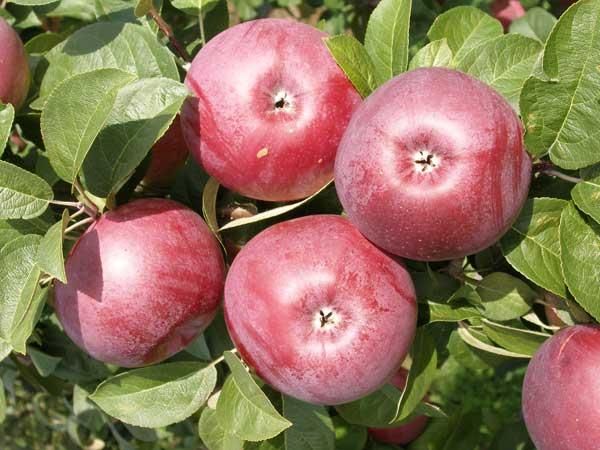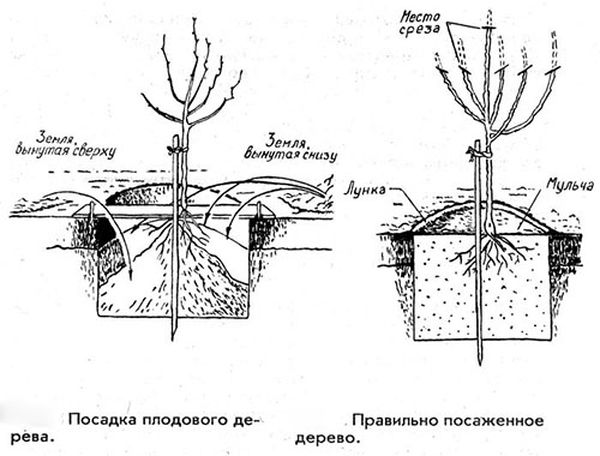Late apple tree with stable yield or Lobo variety
Content
Features of the variety
The Lobo apple tree was bred in Ottawa (Canada) in 1906. Local scientists working on the development of a new large-fruited variety began to pollinate the seedlings of the Macintosh apple tree. As a result of the experiment, a new variety of large-fruited apple appeared - Lobo.
A few years later - in 1920 - Lobo saplings appeared in Belarus and the Baltic countries. In 1979, this fruit crop was given the status of a frost-resistant plant.
Today the Lobo apple tree is grown in Ukraine, Belarus, Lithuania, Latvia, Estonia and Russia. Officially, this variety is zoned for cultivation in the Central Black Earth economic region of the Russian Federation. The Lobo variety became widespread in horticultural farms in the Lower Volga region, Oryol, Tambov, Lipetsk, Belgorod and Voronezh regions.
Video "How to care for apple tree seedlings"
In this video, the expert will share recommendations for the proper care of apple seedlings.
Main characteristics
When choosing a fruit tree variety, it is recommended to carefully read the tree description and technical characteristics.
Tree height and crown width
Judging by the photo, the Lobo apple tree belongs to medium-sized fruit plants. With proper care, the maximum height of a mature tree is 4 m.
During the first years after planting in open ground, the young tree actively grows and quickly forms a crown. Gradually, the high-rounded crown acquires a wide-rounded shape. Young shoots are curved and of medium thickness. Emerald green foliage has an ovoid shape and a matte rough surface. The tip of the leaf is sharp and dissected.
Fruits of the Lobo variety are large, round or slightly elongated conical in shape. Average apple weight at the time of technicaloh ripeness - 180 g. As the fruit ripens, the color of the peel changes: from yellow-green to burgundy-red. The pulp is snow-white, with a pronounced granular structure. The apples are juicy and sweet, with a slight sourness.
Pollinators and yield
The Lobo apple tree has a high yield. From one adult tree, from 200 to 380 kg of ripe fruits are removed. With proper care, as experienced gardeners note, fruiting will be regular and abundant. The beginning of the growing season falls 3-4 years after planting a seedling in a permanent place of growth.
However, the Lobo variety is self-fertile. To achieve abundant fruiting, you cannot do without pollinating trees. As pollinators, you can use Martovskoe, Orlik, Zeleny May, Spartak and other early varieties of apple trees.
The Lobo apple tree is a winter variety. The fruits begin to ripen in early autumn, respectively, the harvest falls in mid-October. The fruits ripen at the same time, so it is recommended not to delay the harvest. The peel on overripe apples cracks, which leads to rotting of the juicy pulp.
Winter hardiness and disease resistance
The winter hardiness of a fruit crop means frost resistance and the ability to quickly recover.During severe frosts, the Lobo variety can freeze. However, according to the description, with the arrival of a warm spring, the vitality of the tree is fully restored.
The weak point of this fruit crop is the almost complete lack of immunity to fungal diseases. You can protect the apple tree from scab and powdery mildew by taking a number of preventive measures and timely fertilizing the soil.
Varieties of rootstocks
To increase frost resistance, the Lobo variety is recommended to be grown on any winter-hardy rootstock:
- columnar;
- semi-dwarf;
- dwarf;
- stale.
Shale rootstock, according to experienced gardeners, is considered one of the best. Such an apple tree does not take up much space in the garden, gives a high yield and rarely gets sick.
Growing rules
To plant an apple tree, you need to choose an area of the garden that is open to the sun. Try to avoid areas with a close groundwater table. Excess moisture in the soil leads to rotting of the root system and wilting of the tree.
The apple tree does not like a draft and the presence of abundant shade. When planting, the spacing must be observed. The Lobo seedling is planted at a distance of 3.5–4 m from other fruit trees in the garden.
The first year after planting, the tree does not need feeding. From 2-3 years, mineral and organic fertilizers are applied to the soil. The apple tree loves moderate watering, so the frequency of watering must be determined by the degree of soil drying.
Do not forget about the importance of the crown formation procedure. If you do not prune the branches, the crown quickly overgrows, which negatively affects the yield of the tree.
Advantages and disadvantages
The main advantages of the Lobo variety include:
- excellent commercial qualities;
- quick adaptation to growing conditions and undemanding care;
- drought resistance and frost resistance;
- consistently high yield;
- early fruiting;
- excellent transportability;
- high decorative qualities.
The key disadvantages of this fruit crop are called:
- low keeping quality of fruits - no more than 3 months;
- poor resistance to pathogens of fungal infections such as scab and powdery mildew.
According to the reviews of experienced gardeners, the Lobo apple tree needs additional shelter for the winter. Freezing of fruit trees is observed in regions with high air humidity. Whitewashing and insulation of trees with breathable covering materials helps to protect the orchard from frost. The trunk circle is covered with fallen leaves and coniferous branches.
Ripe Lobo apples can be eaten raw and also used for preservation, making various drinks, desserts and gravy. Watch the ripening rate of the fruit. Young, fragile branches often break under the mass of fruits.



